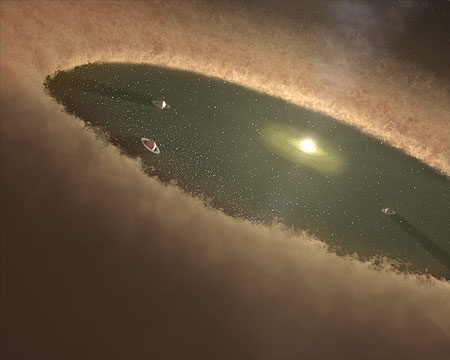|
It's the Astronomy Online non-Blog, or un-Blog.
Everyone has a blog now and since I am no follower of trends, I decided to merge the blog with the website. And I don't want to neglect the website in favor of posting on the blog.
These are the pages that were on the blog of old:
- Home
- Archive (Index of Pages)
- Me
- Current Trends
- Links
- Soho Live
Links:
Google Maps - Mars
Google Maps - Moon
HiRISE
HiRISE - MRO Imaging
Mac Singularity
Meade4M
Slackerpedia Galactica
Software for the Mac
Starry Night Online
Venus Maps
More Favorites:


































Thank you for visiting!
|
|
 |
|
So is Neptune a Planet?:
I was a bit shocked watching the news today. Channel 3 news reported the Chabot Space and Science Center held a Pluto memorial this weekend since Pluto was stripped of its title of planet (a fun idea); in addition, it was reported that Neptune could be next.
This is the first I have heard of this...
So why is there a rumor that Neptune could also loose its status as a planet? I have no idea why, perhaps over-reaction.
Many astronomers (including me) have always felt that Pluto was never a true planet, but a captured Kuiper Belt Object. In technical terms, Pluto is a trans-Neptunian Object which is defined simply as Kuiper Belt Objects under the gravitational influence of Neptune. The orbital dynamics (inclination and overlap) of Pluto indicate that it was probably a captured body. In addition, the composition of Pluto is like other discovered Kuiper Belt Objects (there are clear boundaries within our Solar System with the four rocky planets followed by the gas planets and finishing up with the icy/rocky bodies).
The issue at hand is the IAU Resolution 5A section 2c - what defines a "dwarf planet":
has not cleared the neighbourhood around its orbit
When looking at this definition, it would seem that Neptune has not cleared its orbit because Pluto overlaps; however, disk clearing occurs during Solar System formation. While there is some debate as to how the planets formed, it is agreed that the gas giant planets (Jupiter, Saturn, Uranus and Neptune) must have formed prior to the T Tauri phase of our Sun (i.e. the initiation of fusion at the core) so disk clearing must have occurred prior to this. It can be argued that Pluto was captured some time after planetary formation as Pluto would have been "consumed" by Neptune.
In addition, it is thought that a giant impact in the early history of the Kuiper Belt formed Pluto and its moon Charon. This impact could have changed its trajectory allowing it to be captured in a resonant orbit with Neptune.

Data from the Spitzer Space Telescope suggests that planets form rather rapidly while the outer bodies (like comets and Kuiper Belt-like objects) form much later. A clear demarcation between dusty regions of proto-planetary systems is evidence to this.
So what do I think of all this? I am of the opinion that the eight planets formed within the first 300,000 years of the formation of our Solar System. Continual evolution of the Kuiper Belt Objects would have also formed larger bodies, but a large impact formed the Pluto-Charon binary system. This impact could have caused Pluto-Charon to drift close enough to Neptune to be placed in an inclined orbit. Because of the nature of the outer Solar System, Kuiper Belt Objects would not have cleared their orbits of debris.
Image Credit: NASA/JPL-Caltech/T. Pyle (SSC)
Next Post | Previous Post | Back to Top
|
|

